
Adrenochrome is a chemical compound produced by the oxidation of adrenaline (epinephrine). It was the subject of limited research from the 1950s through to the 1970s as a potential cause of schizophrenia. While it has no current medical application, the related derivative compound, carbazochrome, is a hemostatic medication. Despite this compound's name, it is unrelated to the element chromium; instead, the ‑chrome suffix indicates a relationship to color, as pure adrenochrome is deep violet.

Neurotoxins are toxins that are destructive to nerve tissue. Neurotoxins are an extensive class of exogenous chemical neurological insults that can adversely affect function in both developing and mature nervous tissue. The term can also be used to classify endogenous compounds, which, when abnormally contacted, can prove neurologically toxic. Though neurotoxins are often neurologically destructive, their ability to specifically target neural components is important in the study of nervous systems. Common examples of neurotoxins include lead, ethanol, glutamate, nitric oxide, botulinum toxin, tetanus toxin, and tetrodotoxin. Some substances such as nitric oxide and glutamate are in fact essential for proper function of the body and only exert neurotoxic effects at excessive concentrations.
PLOS Biology is a monthly peer-reviewed scientific journal covering all aspects of biology. Publication began on October 13, 2003. It is the first journal published by the Public Library of Science. The editor-in-chief is Nonia Pariente.
Neurotoxicity is a form of toxicity in which a biological, chemical, or physical agent produces an adverse effect on the structure or function of the central and/or peripheral nervous system. It occurs when exposure to a substance – specifically, a neurotoxin or neurotoxicant– alters the normal activity of the nervous system in such a way as to cause permanent or reversible damage to nervous tissue. This can eventually disrupt or even kill neurons, which are cells that transmit and process signals in the brain and other parts of the nervous system. Neurotoxicity can result from organ transplants, radiation treatment, certain drug therapies, recreational drug use, exposure to heavy metals, bites from certain species of venomous snakes, pesticides, certain industrial cleaning solvents, fuels and certain naturally occurring substances. Symptoms may appear immediately after exposure or be delayed. They may include limb weakness or numbness, loss of memory, vision, and/or intellect, uncontrollable obsessive and/or compulsive behaviors, delusions, headache, cognitive and behavioral problems and sexual dysfunction. Chronic mold exposure in homes can lead to neurotoxicity which may not appear for months to years of exposure. All symptoms listed above are consistent with mold mycotoxin accumulation.
The impact factor (IF) or journal impact factor (JIF) of an academic journal is a scientometric index calculated by Clarivate that reflects the yearly mean number of citations of articles published in the last two years in a given journal, as indexed by Clarivate's Web of Science.

The National Institute on Drug Abuse (NIDA) is a United States federal government research institute whose mission is to "advance science on the causes and consequences of drug use and addiction and to apply that knowledge to improve individual and public health."
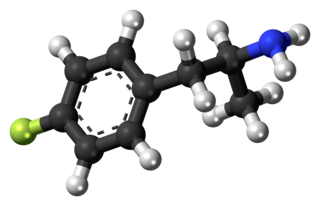
4-Fluoroamphetamine, also known as para-fluoroamphetamine (PFA) is a psychoactive research chemical of the phenethylamine and substituted amphetamine chemical classes. It produces stimulant and entactogenic effects. As a recreational drug, 4-FA is sometimes sold along with related compounds such as 2-fluoroamphetamine and 4-fluoromethamphetamine.
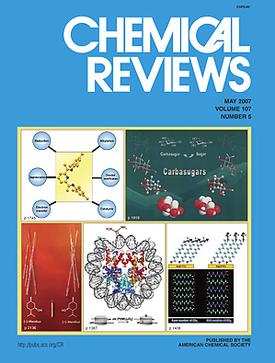
Chemical Reviews is peer-reviewed scientific journal published twice per month by the American Chemical Society. It publishes review articles on all aspects of chemistry. It was established in 1924 by William Albert Noyes. As of 1 January 2015 the editor-in-chief is Sharon Hammes-Schiffer.
BioScience is a monthly peer-reviewed scientific journal that is published by Oxford University Press on behalf of the American Institute of Biological Sciences. It was established in 1964 and was preceded by the AIBS Bulletin (1951–1963).
Environmental Science: Processes & Impacts is a monthly peer-reviewed scientific journal covering all aspects of environmental science. It is published by the Royal Society of Chemistry and Kris McNeill is the editor-in-chief. The journal was established in 1999 as the Journal of Environmental Monitoring and obtained its current title in 2013.

NMDA receptor antagonists are a class of drugs that work to antagonize, or inhibit the action of, the N-Methyl-D-aspartate receptor (NMDAR). They are commonly used as anesthetics for animals and humans; the state of anesthesia they induce is referred to as dissociative anesthesia.
Journal Citation Reports (JCR) is an annual publication by Clarivate. It has been integrated with the Web of Science and is accessed from the Web of Science Core Collection. It provides information about academic journals in the natural and social sciences, including impact factors. The JCR was originally published as a part of the Science Citation Index. Currently, the JCR, as a distinct service, is based on citations compiled from the Science Citation Index Expanded and the Social Sciences Citation Index. As of the 2023 edition, journals from the Arts and Humanities Citation Index and the Emerging Sources Citation Index will also be included.
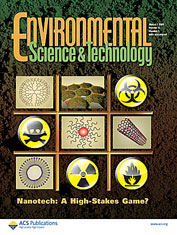
Environmental Science & Technology is a biweekly peer-reviewed scientific journal published since 1967 by the American Chemical Society. It covers research in environmental science and environmental technology, including environmental policy. Environmental Science & Technology has a sister journal, Environmental Science & Technology Letters, which publishes short communications.

The Web of Science is a paid-access platform that provides access to multiple databases that provide reference and citation data from academic journals, conference proceedings, and other documents in various academic disciplines. It was originally produced by the Institute for Scientific Information. It is currently owned by Clarivate.
The Journal of Sex Research is a peer-reviewed academic journal covering the study of human sexuality and the field of sexology in general. It is published by Routledge on behalf of the Society for the Scientific Study of Sexuality. In 1963, the society had published a one-issue journal entitled Advances in Sex Research. The Journal of Sex Research was then first published in 1965. The current editor-in-chief is Cynthia A. Graham.

The Journal of Chromatography A is a peer-reviewed scientific journal publishing research papers in analytical chemistry, with a focus on techniques and methods used for the separation and identification of mixtures.
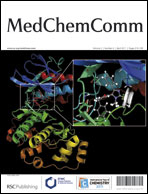
MedChemComm is a peer-reviewed scientific journal publishing original (primary) research and review articles on all aspects of medicinal chemistry, including drug discovery, pharmacology and pharmaceutical chemistry. Until December 2019, it was published monthly by the Royal Society of Chemistry in partnership with the European Federation for Medicinal Chemistry, of which it was the official journal. Authors can elect to have accepted articles published as open access. According to the Journal Citation Reports, the journal has a 2014 impact factor of 2.495, ranking it 27th out of 59 journals in the category "Chemistry, Medicinal" and 163 out of 289 journals in the category "Biochemistry & Molecular Biology".
Precambrian Research is a peer-reviewed scientific journal covering the geology of the Earth and its planetary neighbors. It is published by Elsevier and, as of 2014, the editors-in-chief are V. Pease and G.C. Zhao. It was established in 1974. According to the Journal Citation Reports, the journal has a 2013 impact factor of 6.023.
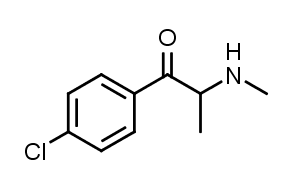
4-Chloromethcathinone is a stimulant drug of the cathinone class that has been sold online as a designer drug.
Kochupurackal P. Mohanakumar is an Indian chemical biologist, neuroscientist and the director of Inter University Centre for Biomedical Research and Super Specialty Hospital, Kottayam. He is a former chief scientist at the Indian Institute of Chemical Biology and is known for his studies on Parkinson's disease and Huntington’s disease. The Department of Biotechnology of the Government of India awarded him the National Bioscience Award for Career Development, one of the highest Indian science awards, for his contributions to biosciences in 2000.










